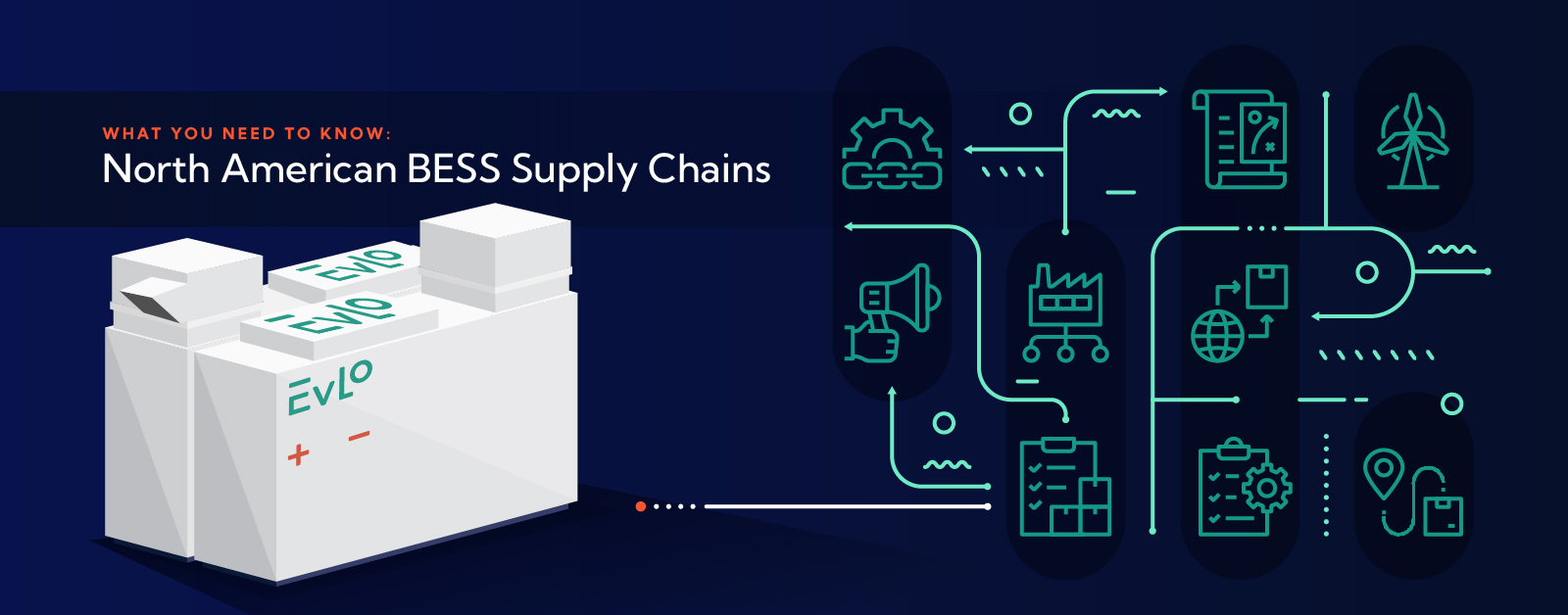Blog
What You Need to Know about North American BESS Supply Chains
April 10, 2024

Driven by the need to efficiently and effectively integrate renewable energy resources to the grid and electrify transportation, the demand for lithium-ion batteries has risen dramatically in recent years. Estimates expect that by 2030, over 1 terawatt-hour of global energy storage capacity will be installed — a more than tenfold increase over 2020.
Supply chains for battery energy storage systems (BESS) have been hot topic of interest for the past few years, spurred by a number of factors including pandemic-related disruptions, questions surrounding domestic content incentives from the Inflation Reduction Act (IRA), Canada’s embrace of clean manufacturing, and more recently, geopolitical tensions and cybersecurity concerns that are leading lawmakers and utilities to take a cautious stance toward Chinese-made electronic battery components.
With all of the buzz around BESS, it can be difficult for utilities and renewable energy developers to make sense of battery supply chains and know what to consider as they’re developing energy storage projects. Here’s what you need to know.
The Current State of North American BESS Supply Chains
The BESS supply chain is made up of a range of components including battery cells, modules, electronic components, and the enclosure, though not all parts are easy to source domestically. Battery cells, especially Lithium Iron Phosphate (LFP) — the best Li-ion chemistry for safety and reliability, are difficult to source in North America due to China’s decade-long head start in building out its battery manufacturing base. According to the National Renewable Energy Laboratory (NREL), there are only four operational manufacturing facilities across the U.S. and Canada that produce LFP battery cells. More than 10 facilities are planned or under construction, but it will be years before they ramp up production to a scale that can meet domestic battery demand. Furthermore, many of these facilities are being built to supply electric vehicle batteries rather than BESS to support the grid.
The Important Components to Consider for Cybersecurity
China’s dominance of BESS supply chains has sparked growing concern. First, the COVID-19 pandemic exposed the dangers of concentrated supply chains and the benefits of regionalization. More recently, lawmakers and utilities have expressed worries around cybersecurity and the risk of bad actors hacking into critical energy storage infrastructure in North America.
The good news, however, is that while China will continue to dominate battery cell production for the foreseeable future, battery cells have no impact on cybersecurity. Only the electronic components of a BESS, including the Battery Management System (BMS), Power Conversion System (PCS) and Energy Management System (EMS), are subject to cybersecurity threats — and these parts are far easier to source from North American suppliers. The BMS is particularly important for cybersecurity as they are enclosed within modules, making them a “black box” to those responsible for operating the battery.
How EVLO is addressing these challenges
To consistently deliver superior safety and performance while reducing project delays, EVLO is highly attentive and proactive in managing its supply chains. EVLO places considerable emphasis on sourcing components within North America whenever possible, particularly for parts that affect cybersecurity. 100% of EVLO’s electronic components come from North American suppliers — and these deep supplier relationships also ensure an abundance of supply parts and spares are available at any given time.
As North America’s battery supply chain continues to develop, EVLO is committed to further building out its robust supplier network to ensure a reliable supply of safe, reliable and high performance BESS that can meet the growing demands of all customers integrating renewable resources to the grid.
